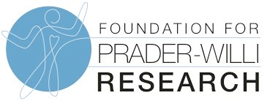This blog contains excerpts from the Clinical Care Program for PWS Overview presented by research team member Priya Balasubramanian at the FPWR 2017 conference. You can watch the full presentation by clicking on the embedded video below.
In case you don't have time to watch the full video, we've captured some of the key points in the notes below.
Priya has a doctoral degree in molecular biology from the University of Southern California. She is FPWR’s Associate Director for Translational Research Programs, helping to advance our clinical care and pharmacotherapy strategic programs. Her presentation detailed FPWR's Clinical Care Program.
Clinical Care Program for PWS: Overview
FPWR's clinical care program is optimizing existing therapies to improve quality of life for patients and families in the short term. The drug development and approval process in the U.S. is lengthy and expensive, and the program is looking at drugs, devices and alternative therapies that are already on the market to see if they can be repurposed for use in PWS.
Program Goals
- Alleviate PWS symptoms in the near term using existing therapies
- Use a collaborative approach with scientists, parents and clinicians to prioritize symptoms that are important to the ccommunity
- Develop targeted studies to evaluate and/or optimize treatment
Plan to Achieve Goals
- Establish Clinical Care Advisory Board: physicians, clinicians, parents
- Develop list of symptoms that are of immediate concern (hyperphasia, behavioral problems, scoliosis, seizures, etc.)
- Evaluate existing, FDA-approved medicine and therapies that can be applied to PWS
- Support clinical studies that are feasible with a rapid turnaround time (1-3 years)
Benefits of This Approach
- Directed approach vs. passive approach to optimizing care
- Input from PWS researchers, clinicians and parents
- Straightforward trials and rapid implementation
Audience Q&A
Q: How big is the list of drugs that’s being looked at?
A: For each symptom, there are 5-6 drugs, for a total of 150-200 drugs. The team is in the process of narrowing down the list.
Q: Is there a timeline for how long it will take to narrow the list, and what the cost will be?
A: The next step is to get input from parents to develop the list of priority symptoms. The team has developed an algorithm that will take survey data to help determine feasibility, the ease of enrolling people in clinical trials, whether the science is strong for a certain drug and other factors in order to shorten the list.
Q: Is this approach being used by other organizations?
A: There are other rare disease organizations that are using the same model.
Clinical Care Program projects that are already in the works include:
- A project having to do with mindfulness has already been started for people with PWS aimed at mitigating their temper outbursts
- An adult growth hormone project
- Our goal is to launch three projects in the next year addressing things like GI mobility, probiotics, etc., once we’ve prioritized the list.
Q: If a drug has been previously approved, can patients start using it right away?
A: The big benefit of using this approach is that when a drug is already approved, you don’t have to re-do all of the phases of testing, shortening the time to approval. Any drug that’s on the market can be prescribed by a physician. It may be beneficial to go back and get a disease-specific indication to help with insurance payment, but if it’s put out in the medical literature that a drug works with PWS, often, that’s enough.
Q: Is the ability to repurpose drugs part of the OPEN Act?
A: Yes, the Open Act is for repurposing drugs, and it was originally part of 21st Century Cures, but was dropped. For the rare disease community, the Open Act is very important.
Q: Is there room for collaboration with other syndromes in which hypotonia is a symptom?
A: Hypotonia is on our list of symptoms, and it’s a great idea to make it easier to do a clinical study if we include other groups with hypotonia.








